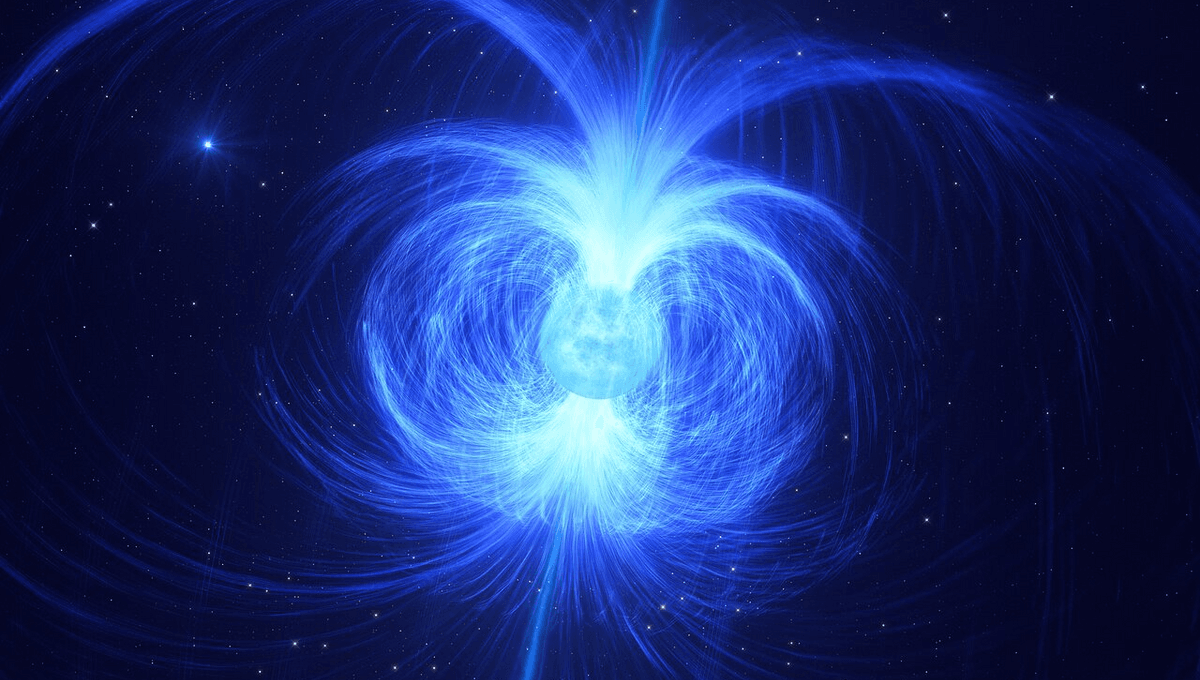Prepare to be amazed by HD 45166, a Wolf-Rayet star that is 10 times hotter than the Sun! These rare and incredibly hot stars play a crucial role in the creation of heavier elements in the universe.
But HD 45166 is not your average Wolf-Rayet star. It has some truly fascinating properties, including a unique spectral signature that has puzzled astronomers.
One scientist, Shenar from the University of Amsterdam, became obsessed with this star and had a breakthrough moment when he wondered if it could be magnetic. To investigate further, Shenar and his colleagues used the Canada-France-Hawaii Telescope to study HD 45166 in unprecedented detail. Their findings were mind-blowing – the star has a magnetic field of 43,000 Gauss!

Just to put things into perspective, the Earth’s magnetic field is only about half a Gauss, and a fridge magnet is around 50 Gauss. HD 45166’s magnetic field is on a whole different level!
However, this magnetic field is not the strongest in the universe. Magnetars, a rare type of neutron star, have magnetic fields that reach hundreds of trillion Gauss. Until now, scientists have struggled to understand how these intense magnetic fields form. But Shenar believes that HD 45166 holds the key to solving this mystery.
As a massive Wolf-Rayet star, HD 45166 is destined to become a supernova. Once it exhausts its hydrogen fuel, it will fuse helium into other elements until its core collapses and explodes, leaving behind a neutron star. This neutron star will have an even stronger magnetic field than HD 45166, potentially creating a magnetar.
But why are some stars so magnetic in the first place? Shenar suspects that HD 45166’s origins lie in the merger of two stars that evolved in a tight orbit, exchanging their outer layers until they merged.
This discovery of a magnetic massive helium star is groundbreaking and opens up new avenues of research. “It is exciting to uncover a new type of astronomical object,” says Shenar. “Especially when it’s been hiding in plain sight all along.”
During their investigation, Shenar and his team also made other intriguing discoveries about HD 45166. They found that it orbits much farther from its companion star than previously thought, ruling out certain theories about its formation. Additionally, HD 45166 is lighter than expected, defying the typical mass range of Wolf-Rayet stars.
Located 3,000 light years away, HD 45166 is far enough to pose no danger when it eventually goes supernova, but close enough to provide us with a spectacular cosmic show.
The remarkable findings of this study have been published in the journal Science.








